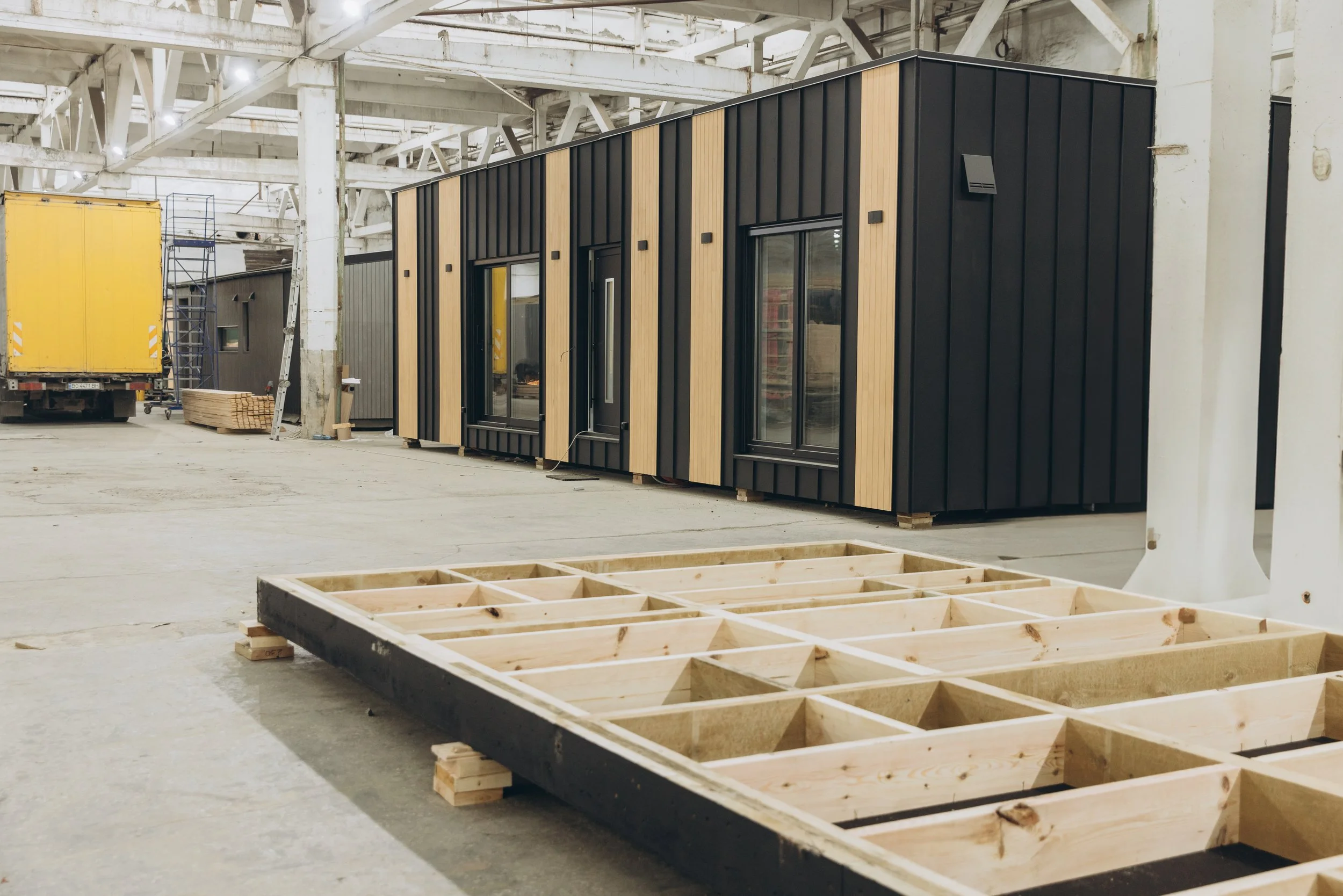Beyond the Announcement: How Modular Can Meet Canada’s Housing Goals
Mark Carney’s recent announcement of Canada’s most ambitious housing initiative since the Second World War presents unprecedented opportunities—and distinct challenges—for the modular construction industry. The federal program aims to dramatically accelerate the housing supply, setting a goal of doubling residential construction nationwide to approximately 500,000 new homes per year.
Modular and prefabricated methods are central to this vision, clearly positioning modular construction as pivotal in addressing Canada's housing crisis.
However, achieving the ambitious goals set forth in this program will require confronting specific, systemic challenges currently faced by modular manufacturers.
Creating a Viable Financial Model
One of the primary hurdles to scaling modular construction is the industry's financial model, which typically requires substantial upfront investment. Factories must invest in advanced manufacturing facilities, machinery, skilled labour training, and technological innovation, yet often lack guaranteed project volumes to justify these expenses. Financial uncertainty frequently discourages significant capital investments necessary for real industrial efficiency.
To overcome this challenge, government-backed housing initiatives need to go beyond symbolic gestures and short-term incentives. The key to unlocking modular’s potential lies in providing modular manufacturers with a predictable pipeline of work through guaranteed volume contracts. This approach would enable factories to maximize economies of scale, stabilize costs, and refine production processes. If government programs commit to purchasing modular homes upfront—actual contracts rather than one-time grants or media-friendly announcements—Canadian modular companies could invest confidently in long-term efficiency and innovation. Such assurances would subsequently attract private developers, who would recognize the tremendous benefit of obtaining fully constructed buildings in weeks rather than months or years.
Developing Modular-Friendly Design Catalogues
Currently, one of the significant barriers for modular manufacturers is the lack of standardized and modular-friendly design guidelines within existing programs, such as those provided by the Canada Mortgage and Housing Corporation (CMHC). Although CMHC offers an extensive catalogue of pre-approved designs, many are not optimized for modular construction, resulting in inefficiencies when adapting them for prefabrication.
Addressing this issue requires developing and disseminating pre-approved, modular-specific design catalogues. These catalogues should undergo rigorous prototyping, design testing, and engineering reviews to eliminate potential issues well before full-scale manufacturing begins. Such fully integrated design-to-manufacturing processes would significantly streamline approval timelines and reduce costly errors or rework during production and assembly. By enabling a seamless transition from approved design to the factory floor, this strategy would significantly enhance the speed and reliability of modular construction, key factors in meeting Carney’s aggressive housing targets.
Transitioning to True Industrialized Manufacturing
Currently, many Canadian modular manufacturers operate essentially as traditional builders who simply construct indoors, rather than as fully industrialized manufacturers. Traditional methods, even when conducted under factory conditions, still lack the repetitive precision and production efficiency associated with industrialized manufacturing. To achieve the rapid housing deployment envisioned in Carney's plan, modular manufacturers must evolve from a construction mindset into true industrial-scale producers. This requires embracing repeatability, standardization, and automation—concepts historically unfamiliar to traditional builders.
Yet, this shift towards industrialized modular construction poses another important question: where is the line drawn between a standardized "product" and a truly livable, adaptable housing space? While wartime housing succeeded due to repetition and standardization, modern expectations around livability, aesthetics, and diversity present new complexities. Balancing productized efficiency with comfortable, customizable homes remains a critical tension—one that demands careful navigation and deeper exploration.
Navigating Regulatory Complexity
Another substantial obstacle is the varied regulatory environment across Canadian jurisdictions. Modular manufacturers often encounter inconsistent building codes, complex local zoning regulations, and permitting delays that hinder the modular construction process. These fragmented regulatory frameworks diminish modular’s speed advantage, increasing costs and project timelines unnecessarily.
To accelerate the adoption of modular construction, Canada needs harmonized regulations and streamlined permitting specifically tailored for modular construction projects. Collaboration between federal, provincial, and municipal governments to standardize building codes and create modular-specific guidelines could significantly reduce bureaucratic obstacles. Moreover, establishing fast-track approval processes for modular construction, as successfully implemented in jurisdictions such as Sweden and the United Kingdom, would be invaluable.
Ensuring Manufacturer Stability and Growth
Finally, modular construction’s growth hinges upon the financial stability and operational sustainability of modular manufacturers. The recent industry history has demonstrated vulnerabilities—companies like Katerra failed due to aggressive scaling without sustainable financial and operational models. To prevent similar outcomes, government and financial institutions must collaborate closely with modular manufacturers to provide supportive financing structures, robust due diligence, and risk mitigation strategies. This includes transparent financial oversight and prudent planning to safeguard modular firms as they scale operations.
Moving Forward: A Collective Effort
Mark Carney’s ambitious housing plan presents Canada with a rare chance to harness modular construction as a core solution to its housing affordability crisis. By directly addressing modular industry challenges—financial viability, standardized modular-friendly designs, regulatory simplification, and manufacturer stability—Canada can turn modular’s theoretical promise into real-world results.
Collaboration and commitment from governments, financial institutions, modular manufacturers, and private developers are essential to realize modular construction's full potential. Through such concerted efforts, Canada stands on the threshold of transforming its housing landscape, delivering homes quickly, efficiently, and sustainably—truly shaping the future of housing in the country.
•••
XLBench is your go-to platform for modular construction insights, setting industry benchmarks, fostering expert discussions, and sharing the latest trends. Through Benchboard, we provide data-driven research, thought leadership, and in-depth analysis to advance modular innovation.
Stay informed and be part of the conversation—follow XLBench for the latest updates, expert insights, and industry trends.
•••
xL Architecture & Modular Design (XLA) is an innovative architecture firm redefining the future of building through off-site construction technologies. With expertise in volumetric modular designs, and panelized building systems, we create cutting-edge solutions that seamlessly integrate form, function, and sustainability.




